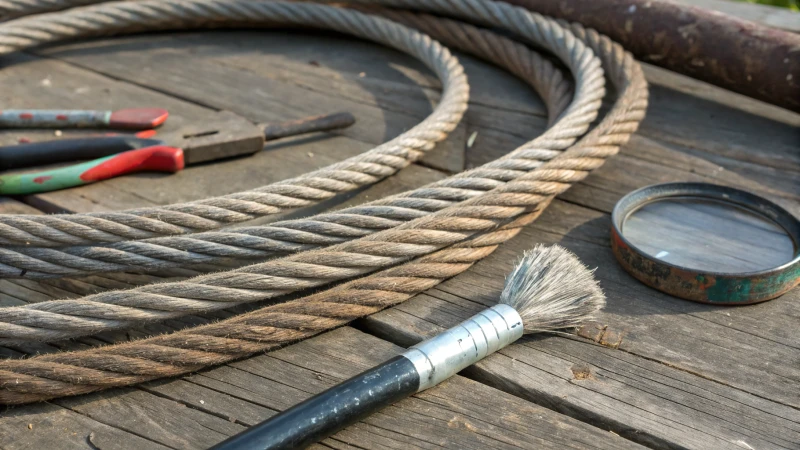
Every time I handle coated steel wire ropes, I'm reminded of the crucial role they play in safety and efficiency.
To keep coated steel wire ropes in top condition, I make sure to inspect them every 3-6 months. I check for coating integrity, abrasion points, and corrosion. Using gentle cleaning methods and lubricating the ropes twice a year has been a game-changer, increasing their lifespan by up to 25%. If I spot any damage, I replace the section immediately to avoid failures.
Starting with these basic steps gives me peace of mind, but digging into the specifics of each process is essential for peak performance. Let me share some detailed insights that have helped me fine-tune my approach to suit various industry needs.
Regular inspections should be done every 3-6 months.True
Regular inspections help identify issues like coating damage early.
Lubricating ropes annually can extend their lifespan by 25%.False
Biannual lubrication, not annual, extends the lifespan by up to 25%.
How Often Should I Inspect My Coated Steel Wire Ropes?
Ever wondered how often you should check your coated steel wire ropes to ensure they’re not secretly plotting against your safety?
I inspect coated steel wire ropes every 3 to 6 months, with high-risk areas getting a quarterly once-over. These regular check-ups help me catch corrosion early and keep everything running safely.
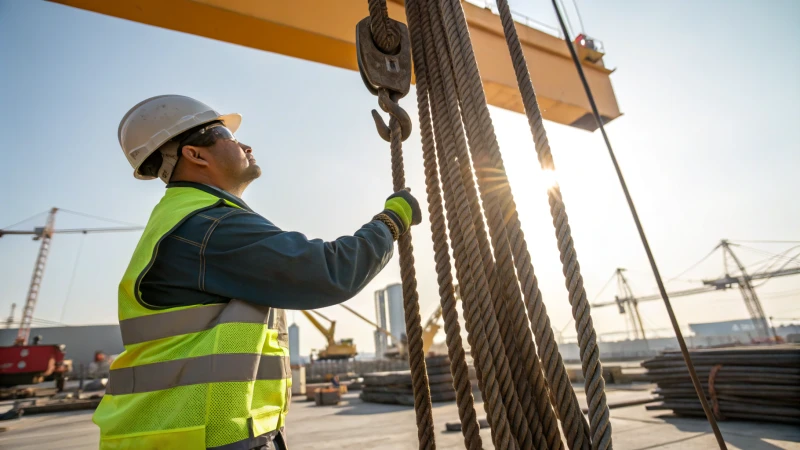
Importance of Regular Inspections
Let me tell you about a time when regular inspections saved my bacon. A few years back, I was overseeing a project where the ropes were the backbone of our operations. We were neck-deep in work, and one overlooked rope could have spelled disaster. Regular inspections helped us spot minor wear and tear before they ballooned into catastrophic failures. You see, coated steel wire ropes are indispensable in many industrial settings, and skipping inspections is like playing a game of roulette with safety. The importance of inspections1 cannot be overstated.
Recommended Inspection Frequency
From my experience, I’ve learned that sticking to a routine inspection schedule makes life so much easier. Typically, I aim for every 3 to 6 months. But if you’re like me and work in high-stress environments like marine or mining operations, it’s best to tighten that schedule to quarterly.
| Environment | Inspection Frequency |
|---|---|
| General Use | Every 6 months |
| High-Risk | Every 3 months |
| Extreme Stress | Monthly (if applicable) |
Key Areas for Inspection
Here’s what I focus on during inspections:
- Coating Integrity: Cracks or peeling? I’m on it.
- Abrasion Points: Any signs of wear from rubbing against surfaces get my immediate attention.
- Corrosion Spots: Rust or discoloration isn’t just ugly—it’s a red flag for potential damage.
Maintenance Tips
Let me share a bit of wisdom: maintaining these ropes is like taking care of a vintage car—it’s all about the little things. I clean them gently and make sure to lubricate every 6 months. Doing this has extended their life considerably. Learn more about maintenance techniques2 that can extend the lifespan of your equipment.
Role of Environment in Inspection Frequency
The environment can be a sneaky saboteur if you’re not careful. I’ve worked in coastal areas where salt exposure was relentless, and frequent inspections were a lifesaver. Factors like temperature and humidity can speed up wear and tear, demanding closer monitoring. Environmental factors3 are not to be underestimated.
By making these regular inspections a habit, I ensure everything is safe and sound, keeping operations running smoothly and securely.
Coated steel wire ropes need inspection every 6 months.True
General use environments require inspections every 6 months to ensure safety.
Ropes in marine areas require annual inspections.False
Marine environments necessitate quarterly inspections due to higher risk factors.
How Can I Best Clean Coated Wire Ropes?
Remember that time you thought your ropes would last forever? Yeah, me too. But then reality hits, and it's all about the right care.
The best way to clean coated wire ropes is to use non-abrasive cloths or brushes with mild detergents, steering clear of harsh chemicals. After cleaning, regular lubrication is crucial to protect and extend the lifespan of the ropes.
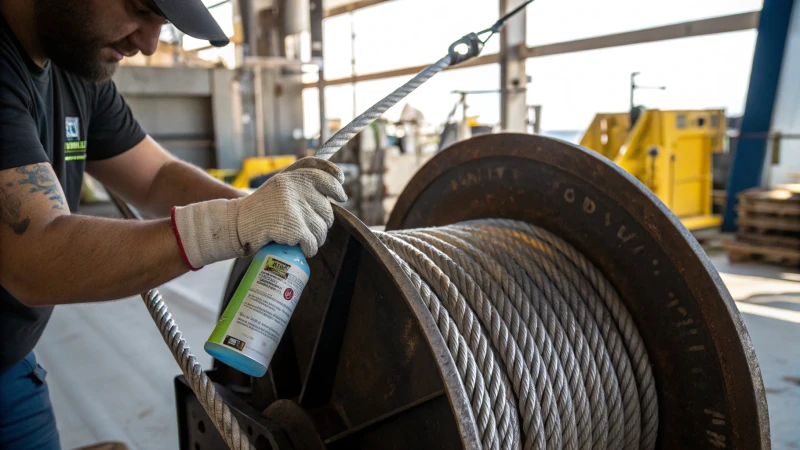
Understanding Coated Wire Ropes
I've been there, standing in the middle of a construction site, watching those coated wire ropes as they work tirelessly day in and day out. They're the unsung heroes of the industry, especially in construction4 and mining. These ropes, often coated in PVC or nylon, offer an extra layer of protection against corrosion and wear. It's like putting on a raincoat before heading into a storm—essential and life-saving.
Recommended Cleaning Techniques
I remember the first time I cleaned one of these ropes. I was nervous about damaging the coating but knew it had to be done. Here's what works best:
- Non-Abrasive Tools: Imagine cleaning your favorite sunglasses—use soft brushes or cloths to gently remove dirt without scratching. Avoid anything harsh that could harm that protective layer.
- Mild Detergents: Think of it as washing a baby. Go for pH-neutral solutions, sidestepping anything too acidic or alkaline that might hurt the rope's skin.
- Rinsing and Drying: After cleaning, it's like giving your dog a bath—rinse thoroughly with clean water to get rid of all soap residue, then dry completely to avoid any sneaky moisture problems.
| Cleaning Method | Tools Needed | Frequency |
|---|---|---|
| Non-abrasive brushing | Soft brush, cloth | Weekly/Monthly |
| Mild detergent wash | pH-neutral detergent | Bi-Monthly |
Importance of Regular Inspection
Imagine walking through a minefield without a map—regular inspection helps you avoid potential disasters by spotting issues like abrasion points5 or corrosion early. Every 3-6 months is good, but bump it up if you're in a risky spot.
Lubrication Post-Cleaning
After cleaning, remember how your car engine feels smoother after an oil change? It's the same for wire ropes. A suitable lubricant can significantly extend their life by reducing friction and guarding against environmental threats.
Recommended Lubricants:
- Silicone-based sprays
- Light mineral oils
Avoiding Common Mistakes
- Over-cleaning: More isn't always better. Too much cleaning can wear down the coating.
- Inappropriate Products: Always check compatibility with your rope's specific coating type—it's like using the right shampoo for your hair type.
Additional Resources
To explore more about taking care of these crucial components, check out our steel wire ropes guide6. It’s packed with insights on choosing the right materials and maintenance tips tailored for various industrial needs.
Coated wire ropes should be cleaned weekly.False
Cleaning frequency depends on use; weekly is not always necessary.
Silicone-based sprays are recommended for lubrication.True
Silicone-based sprays protect and reduce friction effectively.
When Should You Replace a Section of Coated Wire Rope?
Ever stood there, staring at a piece of machinery, wondering if it's time for a change? I sure have, especially when it comes to those trusty coated wire ropes.
I know it's time to replace a section of coated wire rope when I spot fraying, corrosion, or broken strands. Keeping up with regular inspections and industry standards is key to ensuring everything runs smoothly and safely.
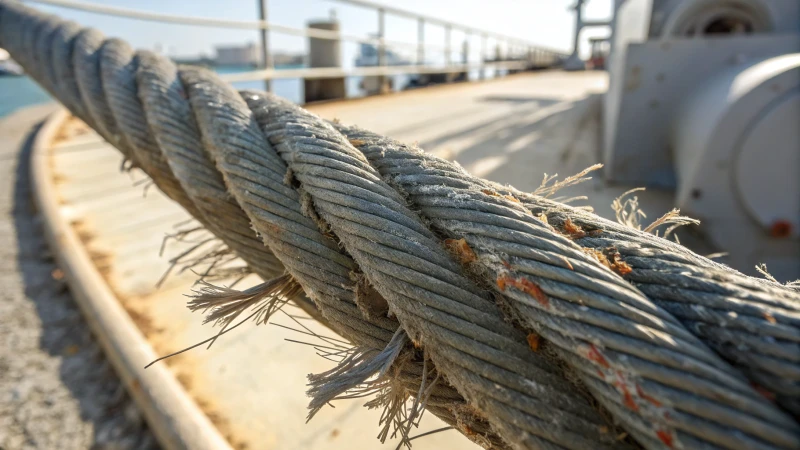
Signs of Wear and Tear
From my experience, recognizing when a coated wire rope needs replacing is all about catching those signs of wear early. I remember the first time I noticed frayed strands—it felt like finding a loose thread on a favorite sweater, except this could lead to a much bigger problem. Corrosion7 or rust are other big red flags that tell me the rope's integrity might be compromised.
Inspection Intervals
I've learned that regular check-ups are non-negotiable. In high-risk environments, I've made it a habit to inspect every 3 months. It’s like going for regular health check-ups—better safe than sorry! During these inspections, I pay special attention to the coating's integrity and any abrasion at typical wear points.
| Inspection Frequency | Environment | Recommended Action |
|---|---|---|
| Every 3 months | High-risk | Replace if damage is detected |
| Every 6 months | Moderate-risk | Monitor closely |
Maintenance Practices
Good maintenance has been my secret weapon in extending the life of wire ropes. Cleaning them with non-abrasive methods and lubricating them every six months is like giving them a little TLC. It’s amazing how much longer they last when treated right! Plus, aligning with industry standards8 keeps me compliant and worry-free.
Safety Standards and Compliance
Following safety standards like those from OSHA feels like having an expert watch over my shoulder, ensuring everything's done right. It’s not just about meeting regulations—it's about peace of mind. Regular training and staying updated on safety practices have become second nature in preventing accidents.
Being strategic about wire rope maintenance and replacement isn't just about saving time and resources; it's about safety. For professionals like John and Emma, staying informed means more than just following trends—it’s about making sure everyone goes home safely at the end of the day.
Frayed strands in wire rope indicate it's time for replacement.True
Frayed strands compromise the strength and integrity of the rope.
Wire ropes in moderate-risk areas need monthly inspections.False
Industry standards suggest inspections every 6 months for moderate-risk areas.
How Does Environment Impact Wire Rope Maintenance?
Ever wonder why some wire ropes seem to last forever while others rust away in no time? Let's dive into how the environment plays a sneaky role in wire rope maintenance.
Environmental factors such as humidity, temperature extremes, and chemical exposure can drastically alter wire rope maintenance needs by accelerating wear and corrosion. Tailoring maintenance strategies to these conditions is crucial for ensuring safety and extending the rope's lifespan.
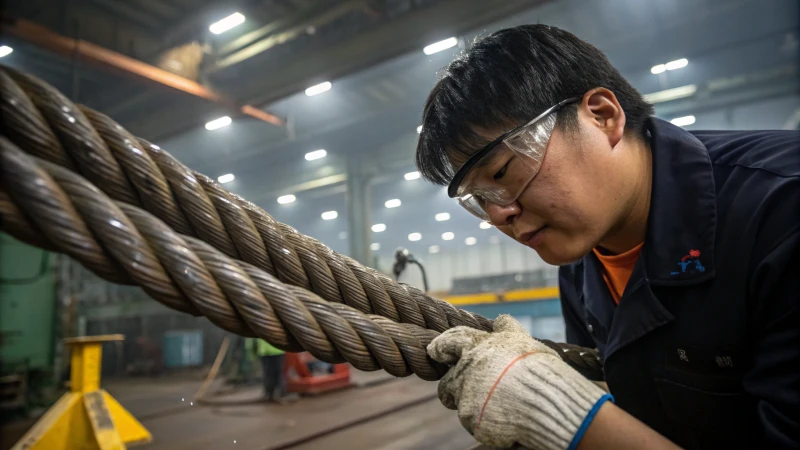
Key Environmental Factors Affecting Wire Rope
-
Humidity and Moisture: When I first started working with wire ropes, I didn't realize how quickly humidity could take its toll. Imagine coming back after a rainy weekend to find your ropes looking worse for wear. Regular drying and using corrosion-resistant coatings9 have since become part of my routine to combat this.
-
Temperature Extremes: A project in the desert taught me that high temperatures aren't just uncomfortable—they can cause ropes to lose their tensile strength. On the flip side, ropes can become brittle in the cold, reminding me of that time we had to pause work during a sudden cold snap. Choosing materials suitable for extreme temperatures has been key.
-
Chemical Exposure: Working near industrial plants, I've seen firsthand how corrosive chemicals can eat away at wire ropes. These situations call for coated or stainless steel ropes that can stand up to harsh chemicals.
Best Practices for Maintenance
| Environmental Factor | Maintenance Strategy |
|---|---|
| Humidity | Use dehumidifiers; apply anti-corrosive coatings |
| Temperature | Use heat or cold-resistant materials; conduct regular inspections |
| Chemical Exposure | Opt for coated or stainless steel ropes; rinse ropes to remove chemicals |
I've learned that regular maintenance strategies need tweaking based on environmental conditions. For instance, in marine settings, galvanized wire ropes10 are a lifesaver thanks to their corrosion resistance. And investing in condition monitoring technology11 helps catch issues before they become costly problems.
Industry Insights
- Construction: Weatherproofing measures are my go-to in construction environments, especially for outdoor projects. Quarterly inspections have saved me from potential disasters more than once.
- Mining: In the grueling conditions of mining, using high-durability materials is a must. I've made it a habit to lubricate and inspect every 3-6 months to keep everything running smoothly.
Understanding these environmental impacts has helped me make informed decisions regarding supplier selection12, ensuring safety and efficiency in operations while avoiding costly downtime.
Humidity accelerates wire rope corrosion.True
High humidity increases moisture exposure, leading to rust and corrosion.
Cold temperatures strengthen wire ropes.False
Cold can make wire ropes brittle, reducing their tensile strength.
Conclusion
Regular inspections and maintenance of coated steel wire ropes every 3-6 months, along with proper cleaning and lubrication, are essential for safety and longevity in industrial applications.
-
Regular inspections help detect early signs of damage, preventing accidents and ensuring operational safety. ↩
-
Discover effective maintenance strategies to keep your wire ropes in top condition and extend their usable life. ↩
-
Explore how factors like humidity and temperature impact rope longevity and what you can do to mitigate these effects. ↩
-
Learn about industry-specific guidelines that ensure safety and longevity of wire ropes used in construction. ↩
-
Discover techniques to identify abrasion points on wire ropes to prevent potential failures. ↩
-
Explore detailed criteria for choosing appropriate steel wire ropes tailored to industrial applications. ↩
-
This link explains the impact of corrosion on wire ropes, highlighting why it's crucial to replace corroded sections to maintain strength. ↩
-
This link provides an overview of industry standards for maintaining wire ropes, ensuring compliance and extending product life. ↩
-
Discover how humidity accelerates corrosion in wire ropes and explore solutions to prevent it. ↩
-
Learn why galvanized wire ropes are preferred in marine settings for their corrosion resistance. ↩
-
Understand how condition monitoring enhances maintenance strategies by providing real-time data. ↩
-
Find criteria for selecting suppliers who meet safety standards and deliver quality products. ↩

